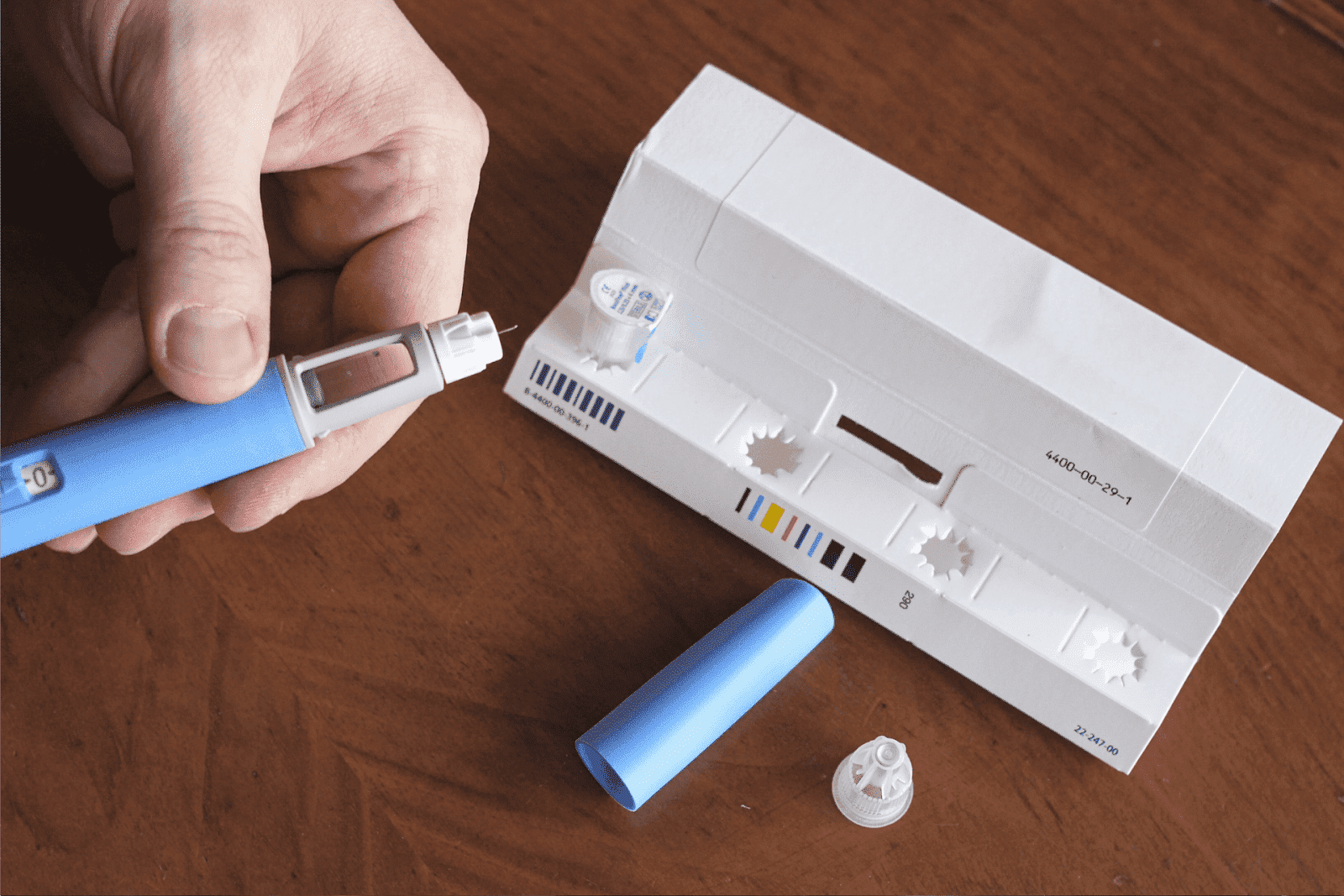Tirzepatide vs Ozempic Cost Comparison
Managing type 2 diabetes effectively often means balancing medication efficacy with affordability. Two of the most talked-about medications in recent years are Tirzepatide [...]
Read More
Medically reviewed by Abhijit Bhattacharyya | MD, PhD, MBA, Tufts University School of Medicine - Miami, Florida on October 21st, 2025.
Managing type 2 diabetes effectively often means balancing medication efficacy with affordability. Two of the most talked-about medications in recent years are Tirzepatide and Ozempic. Both drugs have shown promising results in controlling blood sugar levels and aiding weight loss, but their costs can vary significantly depending on insurance coverage, pharmacy pricing, and patient assistance programs.
Understanding the cost differences between Tirzepatide and Ozempic is essential for patients, caregivers, and healthcare providers alike. This article dives into the pricing landscape of these medications, explores factors influencing their costs, and offers practical advice on how to access affordable care, including the benefits of telehealth services like those offered by Doctronic.ai.
Whether you are newly prescribed one of these medications or considering a switch, knowing the financial implications can help you make informed decisions about your treatment plan. Let’s explore how Tirzepatide and Ozempic compare in terms of cost and accessibility.
Tirzepatide and Ozempic are injectable medications used primarily to treat type 2 diabetes. Both belong to a class of drugs called GLP-1 receptor agonists, which help regulate blood sugar by stimulating insulin secretion and reducing appetite.
Ozempic has been widely available for several years and is known for its effectiveness in managing blood sugar and promoting weight loss. Tirzepatide, marketed under the brand name Mounjaro by Eli Lilly, is a newer medication that combines the effects of GLP-1 and GIP receptor agonists, potentially offering enhanced benefits. This dual action not only aids in glycemic control but also targets metabolic pathways that can lead to improved cardiovascular health, making it a promising option for patients with additional risk factors.
 Clinical Benefits and Patient Experience
Clinical Benefits and Patient ExperienceWhile both drugs improve glycemic control, Tirzepatide has shown in clinical trials a stronger impact on weight loss and blood sugar reduction compared to Ozempic. However, patient experience can vary, with some preferring one medication over the other based on side effects, dosing frequency, or personal response. For instance, while some patients may appreciate the once-weekly injection of Ozempic, others might find the more frequent dosing of Tirzepatide beneficial for their specific health needs, especially if they are closely monitoring their weight and metabolic markers.
Regardless of which medication is prescribed, patients often need ongoing support to manage their condition effectively. Doctronic.ai provides convenient, affordable access to medical professionals who can help monitor treatment progress and adjust care plans without the hassle of in-person visits. Additionally, these platforms can offer educational resources and community support, which are invaluable for patients navigating the complexities of diabetes management. Engaging with healthcare providers through telehealth can also foster a more personalized approach, allowing for real-time adjustments to medication and lifestyle recommendations based on individual progress and challenges.
On average, the list price for a 30-day supply of Ozempic ranges from $800 to $900, depending on the dosage strength. Tirzepatide tends to be slightly more expensive, with monthly costs often exceeding $1,000. These prices reflect retail pharmacy rates before insurance or discounts. The higher price tag of Tirzepatide can be attributed to its newer formulation and the extensive research backing its efficacy in weight management and glycemic control.
For patients without insurance, these costs can be prohibitive. However, many insurance plans cover both medications, though copays and coinsurance amounts vary widely. It is crucial to check with your insurance provider to understand your specific out-of-pocket expenses. Additionally, some pharmacies offer discount programs or membership options that can help mitigate these costs, making it worthwhile for patients to explore all available avenues for financial relief.
Both Novo Nordisk and Eli Lilly offer patient assistance programs to help reduce costs for eligible individuals. These programs can significantly lower copays or provide free medication for those who qualify based on income and insurance status. Furthermore, these pharmaceutical companies often provide educational resources to help patients understand their options and navigate the application process for assistance, ensuring that financial barriers do not prevent access to necessary medications.
Some insurance plans prefer one medication over the other, affecting coverage tiers and prior authorization requirements. Patients should work closely with their healthcare providers and pharmacists to navigate these complexities and find the most affordable option. It is also beneficial for patients to stay informed about any changes in their insurance policies or the introduction of new generic alternatives, as these can impact overall treatment costs and accessibility in the long run. Engaging in discussions with healthcare teams can lead to tailored strategies that optimize both health outcomes and financial sustainability.
Managing diabetes with medications like Tirzepatide or Ozempic requires regular follow-ups to monitor blood sugar levels, adjust dosages, and address any side effects. Traditional in-person visits can be costly and time-consuming, especially for patients in remote areas or with busy schedules.
Telehealth services offer a cost-effective alternative. Doctronic.ai provides access to licensed doctors 24/7 via video visits for under $40. This affordability and convenience make it easier for patients to maintain consistent care without breaking the bank.
 Supplies and Administration
Supplies and AdministrationBoth medications are administered via injection, which means patients need to purchase syringes or pens and possibly other supplies like alcohol swabs. While these costs are generally modest, they add up over time and should be factored into the overall treatment budget.
One of the best ways to manage diabetes affordably is by leveraging telehealth platforms such as Doctronic.ai. This service offers quick, reliable AI-powered doctor visits and affordable video consultations with licensed physicians across all 50 states. Patients can discuss their medication options, get prescriptions, and receive personalized care without the high costs associated with traditional healthcare visits.
Pharmacy prices for these medications can vary significantly. Using prescription discount cards or checking prices at different pharmacies can lead to substantial savings. Websites and apps that compare drug prices are valuable tools for patients seeking the best deals.
Currently, there are no generic versions of Tirzepatide or Ozempic available, but ongoing research may lead to more affordable alternatives in the future. Patients should stay informed and discuss with their healthcare providers whether alternative medications might suit their needs and budgets.
Choosing between Tirzepatide and Ozempic involves considering both clinical benefits and financial factors. While Tirzepatide may offer enhanced efficacy, it generally comes at a higher cost. Ozempic remains a strong option with slightly lower pricing but similar benefits for many patients.
Affordable access to healthcare is critical for successful diabetes management. Leveraging innovative telehealth services like Doctronic.ai can help patients receive expert care conveniently and cost-effectively. By combining smart medication choices with accessible healthcare support, patients can better manage their condition without undue financial stress.
For those seeking affordable, quality care and guidance on diabetes medications, exploring telehealth options is a smart first step. Visit Doctronic.ai today to connect with medical professionals who can help you navigate your treatment options and costs with confidence.
When managing diabetes, every second counts. With Doctronic, you don't have to wait for answers. Our AI-powered doctor provides quality care in seconds, synthesizing the latest peer-reviewed medical research to offer you the most modern treatment advice. Say goodbye to the constraints of traditional healthcare and embrace a more personal approach with Doctronic, where our AI remembers every detail of your health history and is available 24/7 for less than $40. Over 10 million people have already experienced the Doctronic difference. Skip the line and talk to an AI Doctor now, for free.
Managing type 2 diabetes effectively often means balancing medication efficacy with affordability. Two of the most talked-about medications in recent years are Tirzepatide [...]
Read More